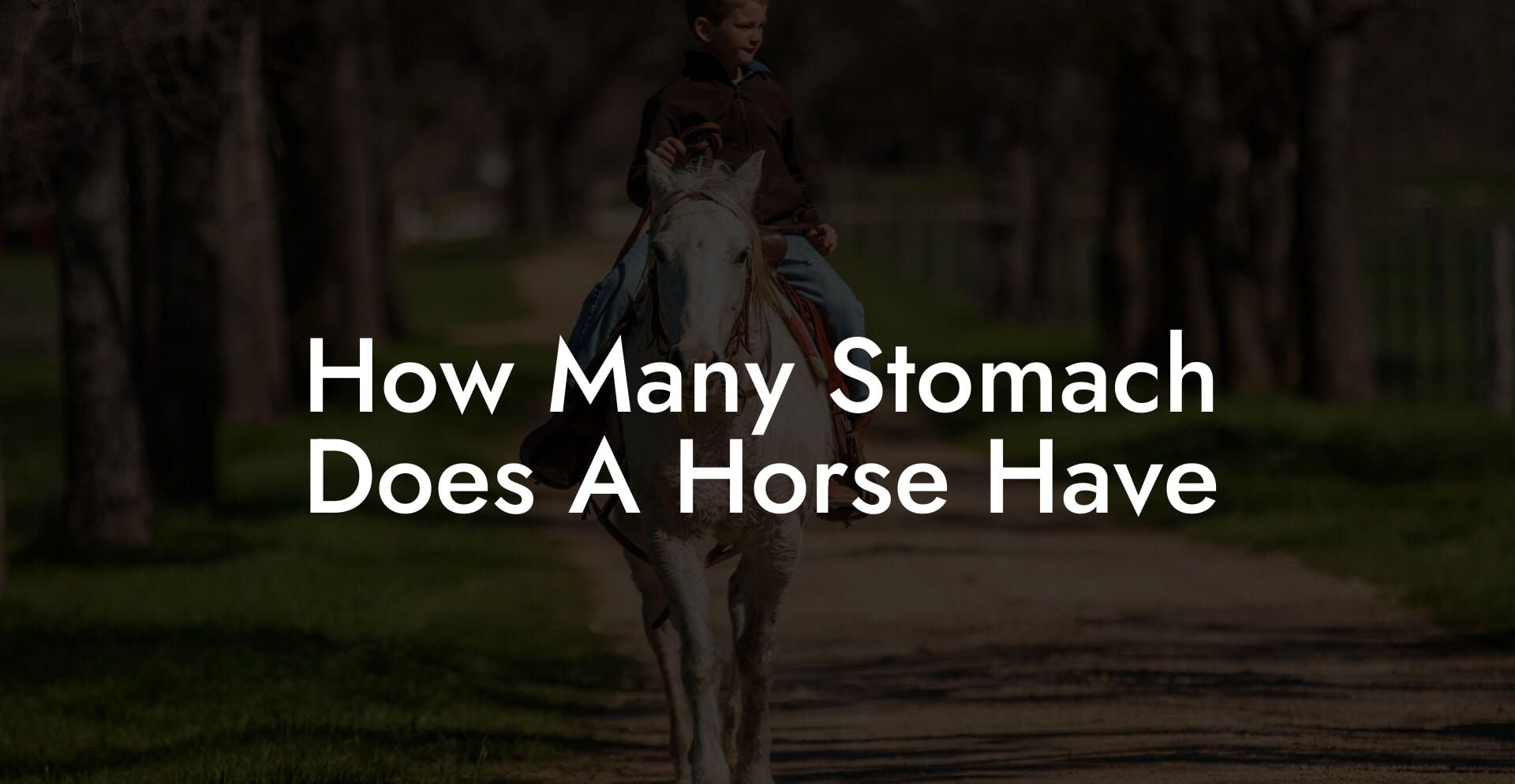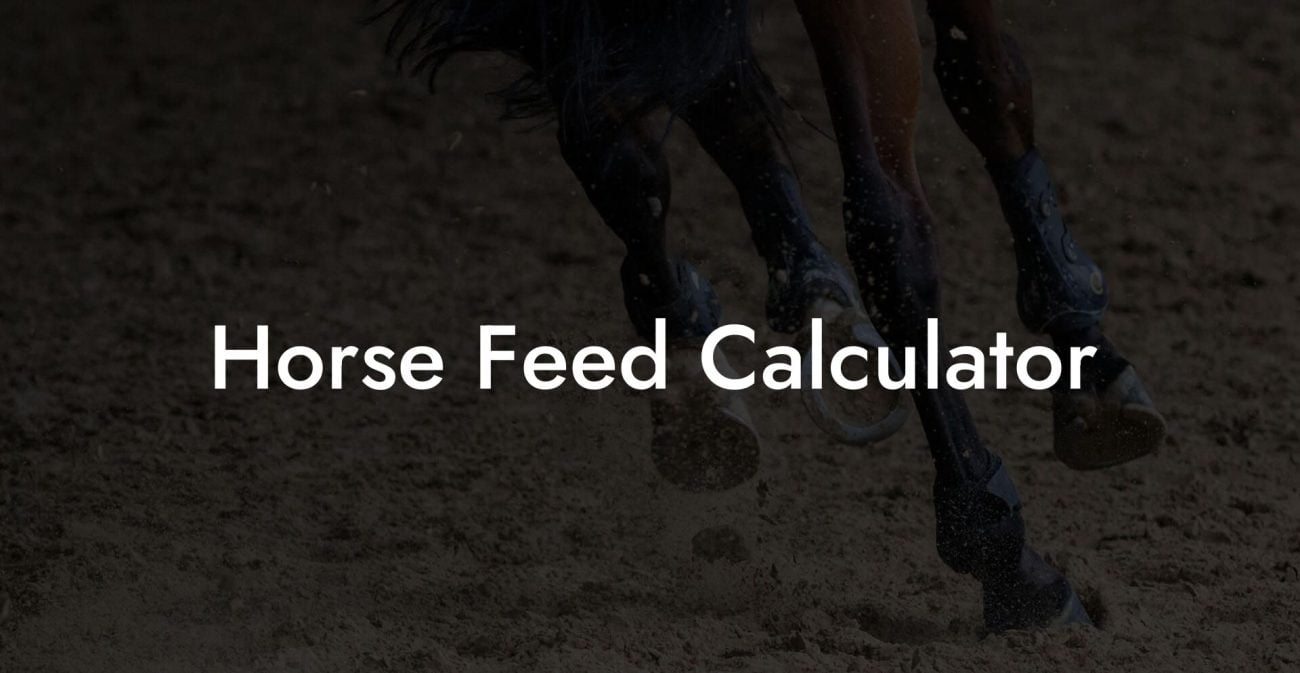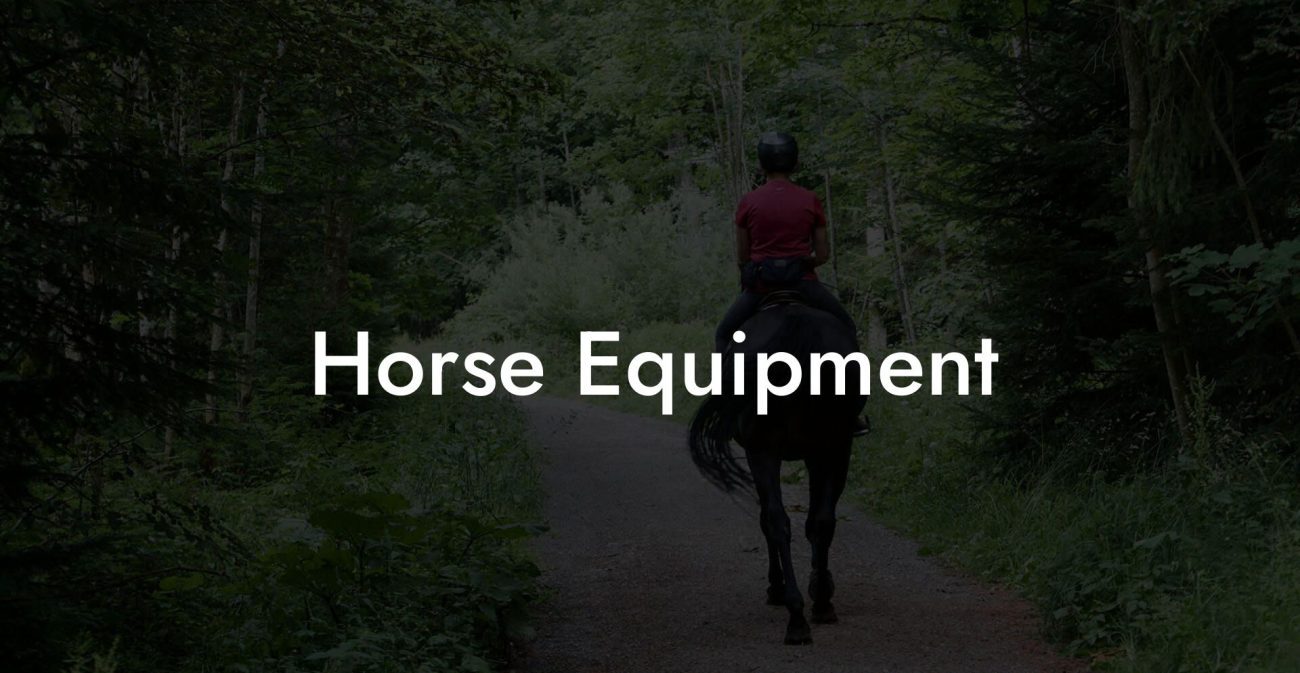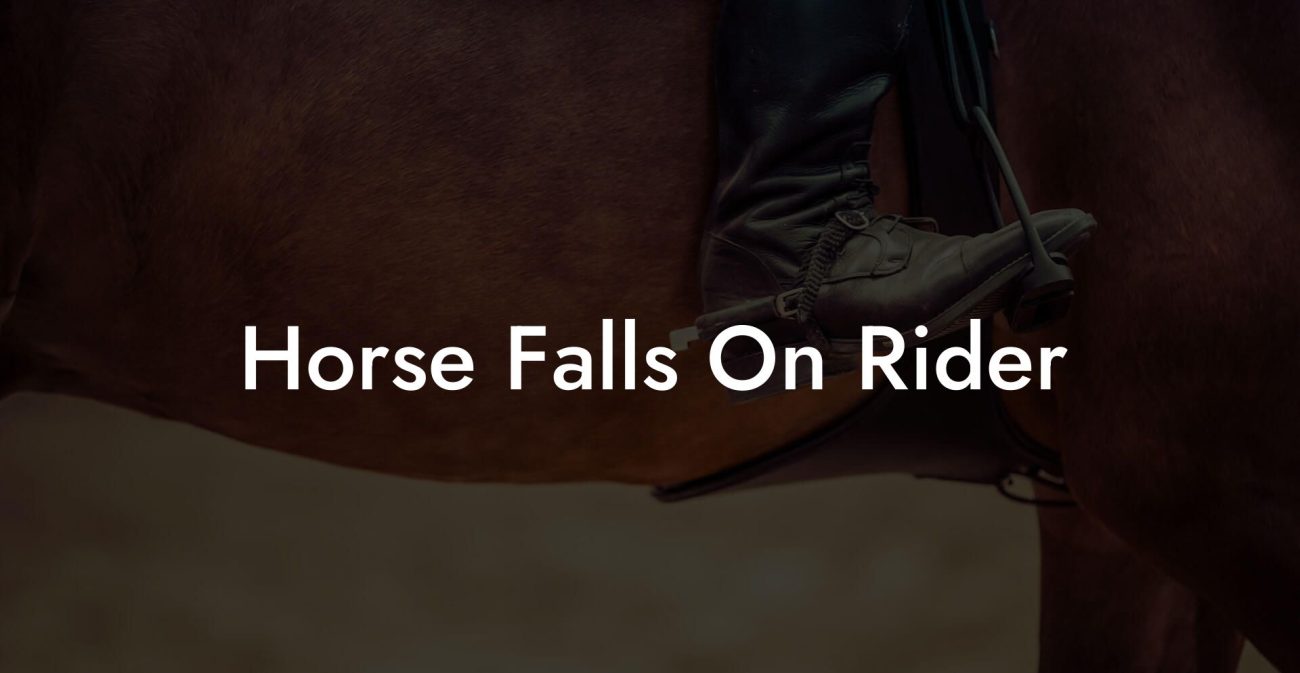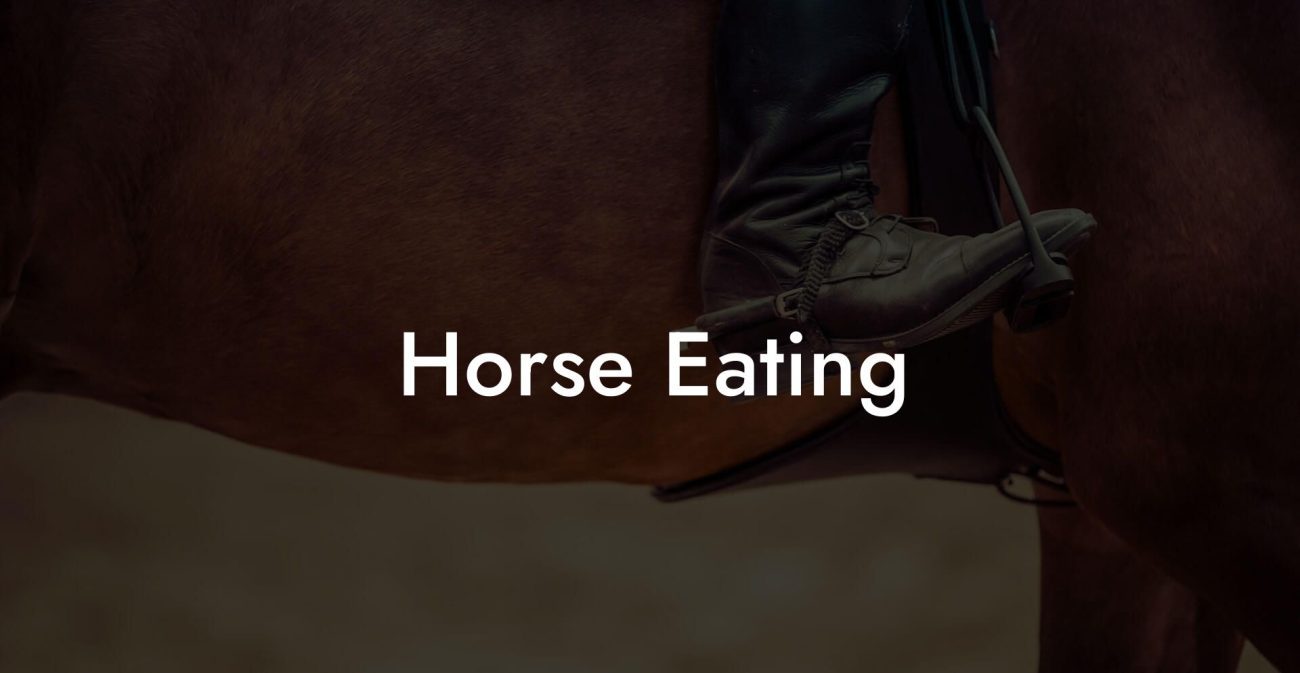Ever wondered if your noble steed has the digestive prowess of a cow with multiple stomach chambers or the streamlined system of a mere mortal? The equine digestive system, with its one-of-a-kind design, is a marvel of evolution that supports a life of continuous grazing and high-intensity activity. Let’s dive into the guts (quite literally) of your horse’s anatomy and bust some myths that have been trotted around for ages.
Quick Links to Useful Sections
- Equine Digestive Anatomy: The One-and-Only Stomach
- The Journey of Food: From Mouth to Colon
- Mouth and Esophagus
- The Single Stomach
- Small Intestine
- Large Intestine and Cecum
- Common Myths and Misconceptions About Horse Stomachs
- Delving Deeper: The Modern Equine Digestive Landscape
- Equine nutrition: What Your Horse Really Needs
- Forage: The Heart of the Diet
- Concentrates and Grains
- Supplements and Additives
- Caring for Your Horse’s Digestive Health: Practical Tips and Tricks
- 1. Feed Small, Frequent Meals
- 2. Prioritize Quality Forage
- 3. Monitor Water Intake
- 4. Introduce Dietary Changes Gradually
- 5. Keep an Eye on Behavioral Changes
- 6. Regular Exercise and Turnout
- Real-Life Experiences: Transforming Equine Digestive Health
- The Case of Bella, the Grazing Champ
- A Stallion’s Journey to Recovery
- Modern Approaches to Equine Care: Technology Meets Tradition
- Preventive Measures and Regular Veterinary Check-Ups
- Resources and Community Support: Your Next Steps
- FAQs About How Many Stomachs a Horse Has and Equine Digestion
- Your Path to Empowering Equine Digestive Health
Equine Digestive Anatomy: The One-and-Only Stomach
Contrary to popular belief, horses do not possess multiple stomachs like ruminants such as cows or sheep. Instead, horses have a single-chambered stomach designed for a steady diet of forage. This unique system is honed for continuous grazing, allowing horses to digest their food gradually as they move and graze throughout the day.
In the world of equine care, understanding that horses have just one stomach is crucial. Unlike rumination in cattle, where multiple compartments break down fibrous plant material more efficiently, the horse’s digestive process relies on a long, complex intestinal tract to extract nutrients efficiently. This design underscores the importance of regular feeding schedules and proper forage management to maintain optimum digestive health.
Key terms like “equine digestive system,” “single stomach in horses,” and “horse digestion” are part of this conversation. Knowing these details can help you make informed decisions about your horse’s diet, overall health, and even veterinary care.
The Journey of Food: From Mouth to Colon
The equine digestive system is a continuous and well-organized assembly line that starts the moment your horse takes a bite. Let’s break down how food travels through your horse’s body:
Mouth and Esophagus
It all begins in the mouth, where horses use their sensitive lips and teeth to sample and chew their food. Saliva is produced to moisten the forage, aiding in the breakdown of fibrous material. Once chewed, the food is swallowed and travels down the esophagus. The process is quick, and the bolus of digested food soon reaches the stomach.
The Single Stomach
Here’s where the debate usually arises: horses, unlike multi-chambered ruminants, sport just one stomach. Despite its small size relative to other animals, the equine stomach is highly efficient. It secretes acids and digestive enzymes to break down the ingested material. However, because of its limited capacity, horses are not built for large, infrequent meals. Instead, their evolutionary design favors continuous, small feedings.
Small Intestine
After the stomach, food moves on to the small intestine, the powerhouse for nutrient absorption. In this segment of the digestive tract, enzymes further digest the food, extracting vital nutrients such as proteins, fats, and carbohydrates.
Large Intestine and Cecum
The large intestine, including the cecum, serves as the fermentation vat for fiber digestion. Here, beneficial microbes break down complex carbohydrates and fibers, producing volatile fatty acids that provide an important energy source for your horse. Ensuring a diet rich in high-quality forage supports these microbes and maintains digestive balance.
Understanding this journey is essential for every horse owner, particularly for those keen on sustainable and healthy equine care. The frequent movement of food through the gastrointestinal tract reinforces that horses thrive on multiple small meals rather than the occasional large feeding session.
Common Myths and Misconceptions About Horse Stomachs
There are several myths floating around about equine digestion, and it’s time to set the record straight:
- Myth 1: Horses have multiple stomachs. Fact: Horses have a single-chambered stomach. The misconception may arise from confusing their digestive systems with those of ruminants like cows, which have four stomach compartments.
- Myth 2: Horses can handle large, infrequent meals. Fact: The structure of the equine stomach is optimized for continuous, small meals. Overfeeding or large meals can cause colic and other digestive problems.
- Myth 3: Forage is merely a filler in a horse’s diet. Fact: Forage is the foundation of an equine diet. High-quality hay or pasture directly supports proper gut fermentation and overall digestive health.
Dispelling these myths is especially important for new horse owners and enthusiasts. Armed with the correct information, you can better support your horse’s dietary needs and prevent common gastrointestinal issues.
Delving Deeper: The Modern Equine Digestive Landscape
From pasture paddocks to modern stables, the digestive health of horses is a hot topic among Gen-Z and millennial horse enthusiasts. With the rise of digital platforms and social media, many are now sharing insights into holistic equine care, nutritional trends, and the latest veterinary advancements.
Terms like “holistic equine care,” “natural horse diets,” and “sustainable grazing” have seen a surge in popularity. The conversation often extends beyond simple feeding practices to encompass topics like:
- Feed Timing and Meal Frequency: Why it’s essential to mimic a natural grazing pattern to ensure optimal digestion and reduce the risk of colic.
- Prebiotic and Probiotic Supplements: How these digestive aids can help balance the gut microbiome and improve nutrient absorption.
- Herbal Remedies: Natural supplements such as apple cider vinegar or herbal teas that have been touted for supporting digestive health.
As you explore these modern practices, remember that your horse’s digestive system is finely tuned to work best with a consistent, balanced intake of forage. Subscribe to veterinary-approved advice and always consult a professional when tweaking your horse’s diet.
Equine nutrition: What Your Horse Really Needs
When it comes to feeding a horse, the mantra is simple: forage first, concentrates second. High-quality forage, such as pasture grass or hay, is the cornerstone of a healthy equine digestive system. It provides the roughage needed to keep the gut moving, supports microbial health in the large intestine, and offers a natural source of essential nutrients.
Here are some nutritional insights:
Forage: The Heart of the Diet
Forage should account for at least 1.5% to 2% of a horse’s body weight in fresh feed daily. This encourages a steady supply of nutrients and prevents the digestive disturbances often associated with sudden, large meals.
Concentrates and Grains
Grains and concentrates may be included in the diet for performance horses or those with higher energy requirements. However, because the equine stomach is sensitive to large amounts of starch, these should be fed sparingly and always under veterinary supervision.
Supplements and Additives
Many horse owners have turned to supplements like prebiotics, probiotics, and digestive enzymes to further support gut health. While these can be beneficial, it’s important to source high-quality products and discuss them with your equine nutrition expert.
By establishing a balanced and nutritious diet, you’re not only ensuring your horse stays energetic and productive but also preventing common digestive issues like ulcers, colic, and dysbiosis.
Caring for Your Horse’s Digestive Health: Practical Tips and Tricks
Maintaining the optimal function of your horse’s digestive system is paramount for its overall health and well-being. Here are some practical, down-to-earth tips to keep your horse’s gut in tip-top shape:
1. Feed Small, Frequent Meals
Instead of the occasional large meal, provide your horse with consistent access to forage. This feeding schedule aligns with their natural grazing behavior and minimizes the risk of digestive upsets.
2. Prioritize Quality Forage
Whether your horse grazes on pasture or is fed hay, opt for the highest quality possible. Ensure the forage is free from dust, mold, and other contaminants that could upset the stomach.
3. Monitor Water Intake
Water is a critical component of digestion. Ensure that your horse has constant access to clean, fresh water. Adequate hydration helps perform the mechanical digestion required to break down fibrous material effectively.
4. Introduce Dietary Changes Gradually
The equine digestive system can be sensitive to abrupt changes. When introducing new feeds or supplements, do so gradually over a two-week period to allow the gut microflora to adapt.
5. Keep an Eye on Behavioral Changes
Changes in behavior, such as reduced appetite, discomfort during eating, or lethargy, can signal digestive distress. Acting quickly at the first signs of trouble by consulting your veterinarian can preclude serious complications.
6. Regular Exercise and Turnout
A horse’s movement helps stimulate digestion and prevent the stagnation of food in the gut. Ensure your horse gets regular exercise and access to open spaces, which encourages a natural grazing rhythm.
Using these simple, everyday practices, you can go a long way in ensuring your horse’s digestive system remains robust and resilient. Through proper feeding strategies, vigilant monitoring, and supportive lifestyle choices, you’re not just feeding your horse, you’re nurturing its overall well-being.
Real-Life Experiences: Transforming Equine Digestive Health
Nothing drives a point home like a real-life story. Across agritourism farms, equestrian centers, and backyard stables, many horse owners have witnessed remarkable recoveries by tailoring feeding practices to their horse’s natural digestion.
The Case of Bella, the Grazing Champ
Bella was a high-spirited mare known for her robust energy. However, she suffered from intermittent signs of discomfort and poor performance. Her owner, a savvy millennial with a penchant for holistic pet care, dug deep into modern equine nutrition strategies. By switching to a forage-rich diet and ensuring Bella had round-the-clock access to pasture, her digestive issues began to fade away. Not only did Bella’s energy levels soar, but her overall demeanor transformed into one of contentment and vigor, proving that understanding digestive needs and making slight adjustments can work wonders.
A Stallion’s Journey to Recovery
Jake, an ace show jumper with a history of colic episodes, had experienced digestive upsets that threatened his performance career. His caretaker revamped his feeding schedule, transitioning him to multiple small meals and introducing a probiotic supplement to balance his gut bacteria. Within weeks, Jake’s digestion improved, his risk of colic diminished, and his impressive show-jumping prowess returned. His journey serves as a reminder that attention to digestive details isn’t just about avoiding discomfort, it’s about unlocking a horse’s full potential.
These stories highlight how informed feeding practices and a focus on digestive health can lead to significant improvements in performance, comfort, and overall quality of life for your horse. Whether you’re a first-time horse owner or a seasoned equestrian, these insights reinforce the importance of a balanced, mindful approach to equine care.
Modern Approaches to Equine Care: Technology Meets Tradition
The digital age has ushered in innovative ways to monitor and maintain the health of our equine companions. Gone are the days when owners relied solely on intuition and traditional methods. Today, technology plays an integral part in managing diet, exercise, and even digestive health.
Cutting-edge apps and digital tools allow you to track your horse’s feed intake, monitor weight changes, and even receive alerts when it’s time for a feeding adjustment. For the tech-savvy millennial or Gen-Z horse enthusiast, these modern approaches complement traditional care practices by promoting consistency and accountability.
Moreover, veterinary telemedicine platforms now enable real-time consultations on digestive health issues, ensuring that even subtle symptoms can be addressed promptly. This blend of technology and traditional methods equips you with the resources needed to optimize your horse’s diet and overall well-being.
Embracing technology does not mean abandoning traditional wisdom; rather, it creates a robust ecosystem where the best of past and present merge to support your equine friend. By leveraging these tools, you can ensure that your horse enjoys the seamless fusion of nature’s bounty and modern insight.
Preventive Measures and Regular Veterinary Check-Ups
Prevention is always better than cure, and when it comes to equine digestive health, proactive care is the name of the game. Regular veterinary check-ups ensure that potential problems are caught before they escalate. Annual or bi-annual digestive evaluations can help determine if your feeding regimen is meeting your horse’s needs.
Routine checks may include:
- Gastrointestinal Examinations: To assess the health of the stomach, intestines, and cecum.
- Dental Health Checks: Since proper chewing is crucial for effective digestion, dental evaluations can identify issues that might lead to larger digestive problems.
- Body Condition Scoring: Tracking changes in weight and overall body condition can signal whether your horse’s diet is appropriate or needs adjusting.
Regular vet visits, coupled with preventive measures like proper deworming protocols and vaccination routines, maintain a harmonious digestive process and safeguard against potential crises such as colic. Remember, a healthy horse is a happy horse, and investing in preventive care pays dividends in their performance and longevity.
Resources and Community Support: Your Next Steps
Embarking on the journey of equine digestive health isn’t one you need to tackle alone. The world of horse care is brimming with communities, online resources, and expert advice waiting to support you. From social media groups dedicated to natural equine nutrition to local workshops and webinars led by veterinary specialists, the collective wisdom available is vast.
Here are some next steps to empower your journey:
- Join Online Forums: There are numerous communities on platforms like Facebook, Reddit, and specialized equine websites where you can exchange tips and experiences with other horse enthusiasts.
- Follow Reputable Blogs and Podcasts: Stay updated on the latest trends in equine nutrition and holistic care by following thought-leaders who bridge traditional practices with modern innovations.
- Consult with Your Veterinarian: A trusted veterinary professional can offer guided advice tailored to your horse’s individual needs, ensuring that every aspect of their digestive health is optimally managed.
- Attend Equine Workshops and Webinars: Gain deeper insights into the latest research and practical techniques for maintaining digestive health by participating in interactive learning sessions.
Whether you’re just starting or looking to enhance your current practices, these resources can help you navigate the complexities of equine digestive health with confidence and community support. Engaging with fellow enthusiasts not only deepens your understanding but also celebrates the shared passion for ensuring our horses live long, healthy, and happy lives.
FAQs About How Many Stomachs a Horse Has and Equine Digestion
Below are some frequently asked questions that address the core aspects of equine digestive health, ideal for anyone seeking straightforward answers to common queries:
1. How many stomachs does a horse have?
Horses have one single-chambered stomach. Unlike ruminants (e.g., cows) that have multiple stomach compartments, a horse’s digestion relies on a long, continuous gastrointestinal tract to break down food.
2. Why is it important that horses have only one stomach?
The single-chambered stomach is designed to support frequent, small meals, which aligns with the horse’s natural grazing behavior. This helps maintain a consistent digestive process and minimizes the risk of disorders such as colic.
3. What role does forage play in a horse’s digestive health?
High-quality forage is essential as it provides the necessary fiber for proper gut motility, supports the microbial population in the large intestine, and supplies key nutrients in a form that the horse’s digestive system can efficiently process.
4. Can dietary supplements improve a horse’s digestion?
Yes, supplements like prebiotics, probiotics, and digestive enzymes can help support a healthy gut flora and improve the overall efficiency of nutrient absorption. However, always consult with a veterinarian before adding supplements to your horse’s diet.
5. What are the signs of digestive problems in horses?
Signs may include reduced appetite, lethargy, colic, changes in manure consistency, and behavioral changes during feeding. Early detection and routine monitoring are key to addressing any digestive issues.
6. How can feeding practices affect a horse’s digestion?
Feeding small, frequent meals that closely mimic natural grazing patterns benefits the digestive process. Abrupt changes or large meals can disrupt the balance and lead to issues such as gastric ulcers or colic.
7. Are there any technological tools available to monitor a horse’s digestion?
Absolutely. Modern apps can track feeding schedules, monitor weight and behavior, and some even interface with smart feeders. These tools help ensure that your horse’s digestive health is continuously monitored and maintained.
Staying informed about equine digestive health is essential for any horse owner. With the right balance of proper nutrition, preventive care, and community resources, you can help ensure that your horse remains vibrant and thriving.
Your Path to Empowering Equine Digestive Health
The digestive health of your horse is a cornerstone of its overall vitality, performance, and happiness. By embracing the realities of equine anatomy, recognizing that horses have one simple yet efficient stomach, and pairing this knowledge with modern nutritional insights, technological innovations, and community wisdom, you can forge a path toward enhanced equine care.
Every moment spent understanding your horse’s digestive system is an investment in their future. By aligning feeding habits with natural behavior, maintaining a balanced diet rich in high-quality forage, and being proactive about preventive health measures, you’re ensuring your horse thrives in every aspect of its life.
For the modern, socially connected horse enthusiast, empowering your care regimen with reliable information, community support, and contemporary tools is the key to unlocking a new era of equine wellness. As you continue your journey, remember that every mindful feeding practice, every scheduled veterinary check-up, and every shared piece of wisdom from fellow owners builds a legacy of caring for these majestic animals.
Embrace this opportunity to deepen your understanding of equine digestion and let it inspire a more thoughtful, informed, and holistic approach to horse care. Your journey to master the art of equine digestive health is just beginning, saddle up and enjoy every step along the path.

